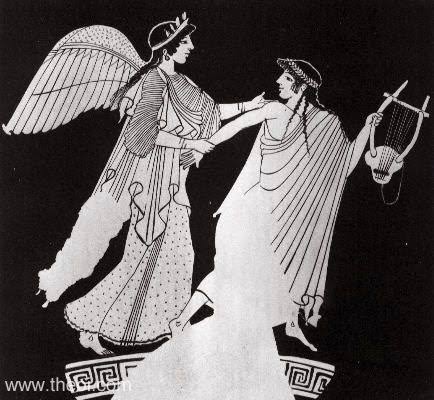“Ode on a Grecian Urn” is one of the most celebrated romantic poems by the great romantic poet John Keats. The poem captures the poet’s subjective approach to an ancient Grecian Urn and a traditional physical object like the urn he has been used as metaphor to signify abstract ideas such as truth and eternity. In the poem, Keats explores the and a permanence of the art as typified by the urn and establishes it's connection with transient life. It also graphically furnishes the contrast between the ideal and the real.
The poem opens with a description of the urn as a bride, a foster child, a historian. All these personifications subtly indicate the permanence of the urn over time. The poet describes the pastoral scenes engraved on the surface of the urn and establishes its supremacy by saying that “Heard melodies are sweet, but those unheard/ Are sweeter;........”. The world depicted in the urn's surface is an ideal one. It's pre-eminence is established through its immutability-- “Fair youth, beneth the trees be bare”. In the ideal world of the urn, it is eternal spring. 'The weariness, the fever, and the fret’ can never touch the figures on the urn. They are forever happy as they are not subject to sufferings and pains, decay and death-- “Ah, Happy, happy boughs! that cannot shed/ Your leaves , not ever bid the Spring adiue; / All breathing human passion far above, / That leaves a heart high sorrowful and cloyed, / A burning forehead, and a parching tongue.” The urn is immune from the negative aspects of time. It will continue to exist to teach human beings great lessons. In the concluding stanza, the poet completes the connection between the abstract and the concrete. “Beauty is truth, truth beauty” sums up the relationships described through the poem.
The language in the poem is magnificent. The tone is quite interesting, as Keats seems truly awed and astonished by the urn he reflects over. His diction is rather elevated. The poem is written in pentameter, throughout, which leads to a very flowing rhythmic effect; the rhythm scheme is somewhat unusual, but Keats breaks the form with this five parts poem, so there is nothing unusual in his creation if an peculiar rhythm pattern, that of A-B-A-B-C-D-E-D-C-E. Poetic ddevices like alliteration such as “silence and slow”, “leaf-fringed legend”, “Ah, happy, happy boughs” and “Of marble men and maidens overwrought” add to the beauty of the poem.
In “Ode on a Grecian Urn”, Keats uses Language and an ancient Grecian Urn, to link abstract concepts to real, concrete things. Using iambic pentameter, and a unique rhythm scheme, and some devices of figurative language, Keats sets up a melodic, beautiful flowing poem which explores the relation between art and life, the ideal and the real.




0 Comments